In this guide, I will show you how to add users to a group using PowerShell and the AD Group Management Tool. Both options make it easy to add users to a single or multiple groups in Active Directory.
PowerShell Add User to Group
In this example, I’ll use the Add-ADGroupMember cmdlet to add a single user to a group.
Step 1. Open PowerShell as Administrator
Step 2. Copy and paste the command below. In this example, user Beth.Bain will be added to group IT_Local.
Add-ADGroupMember -Identity IT_Local -Members Beth.BainIf the command works it won’t return any info.

You can verify the user was added to the group with this command.
Get-ADGroupMember -Identity "IT_Local" | select name | sort name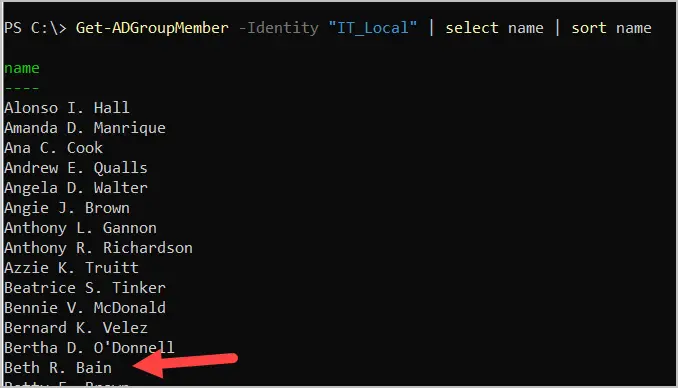
Option #2 – Add Multiple Users to Group with AD Group Management Tool
In this example, I’ll use the AD Group Management Tool to add users to multiple groups.
Step 1: Download the included CSV template.
Step 2. Add the group and user details to the CSV. You can include multiple groups and multiple users. (See examples below for more details).
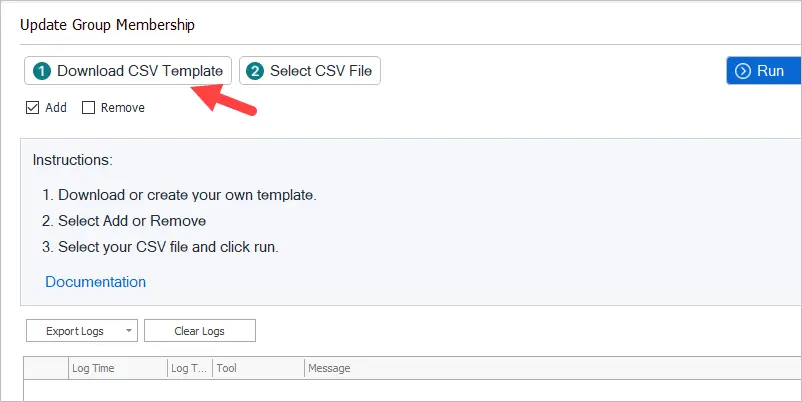
Step 3. Click Run. Review output.
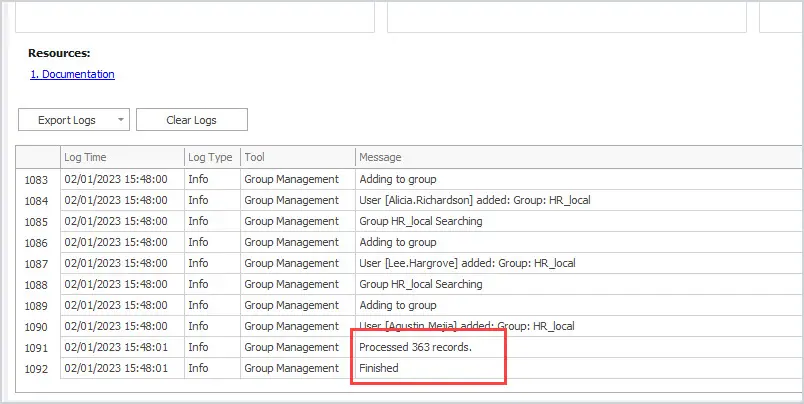
Bulk Add Users to a Group
Adding one or two users into a group is very easy with PowerShell or ADUC but what about when you need to add a large list of users? ADUC has very limited options for bulk-adding users and PowerShell can be complicated for simple tasks like this. That is why I created a simple GUI tool for this.
Let’s walk through an example.
I’m going to add 300+ users to the “HR_Local” security group.
Step 1: Open the “Update Group Membership” Tool
Click here to download a free trial
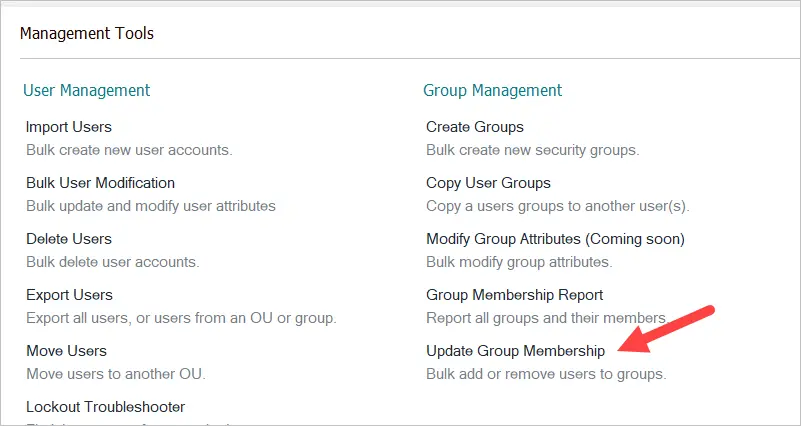
Step 2: Setup the CSV File
Click on “Download CSV Template” and save the template. You can save it anywhere you like.

Now just fill out the CSV file.
sAMAccountName = logon name of the users you want to add to a group.
memberof = the group name you want the user to be a member of.
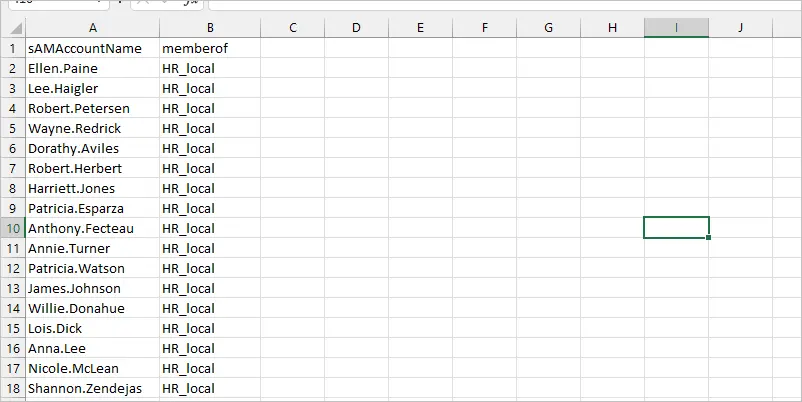
Tip: Included with the AD Pro Toolkit is the “User Export tool“. This makes it easy to export all domain users, users from a group, or organizational unit. This can help you build the CSV file if you don’t already have a list of usernames. For example, I need a list of all the HR users, instead of manually typing them all out I can use the export tool to quickly get all the HR usernames.
Here is a screenshot of the User Export Tool. In this screenshot, I’m going to export all of the users from the HR folder and export their usernames.
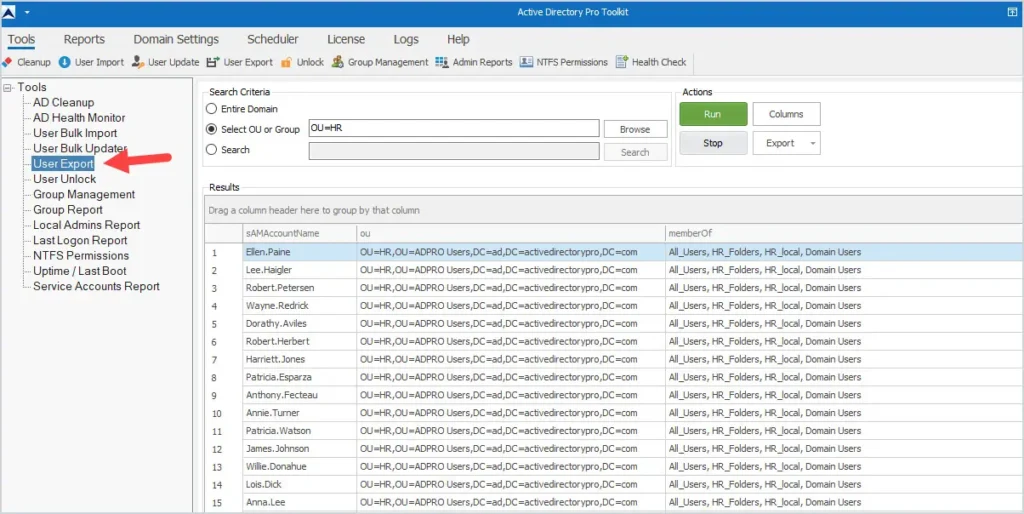
Step 3: Select Your CSV File and click Run
Make sure “Add” is checked.
Click “Select CSV File” and select your template.
Click Run.
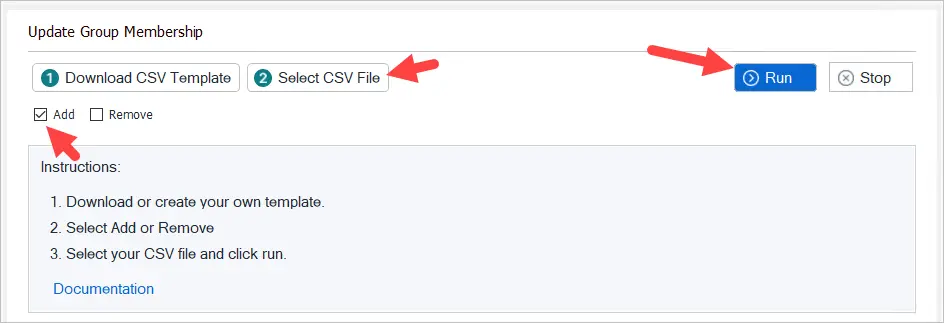
The tool will display the results and you can watch the progress in the log window. If there are any errors they will display in red.

Let’s verify the users were added by using the Get-ADGroupMember PowerShell cmdlet.
Get-ADGroupMember -Identity hr_local | select name
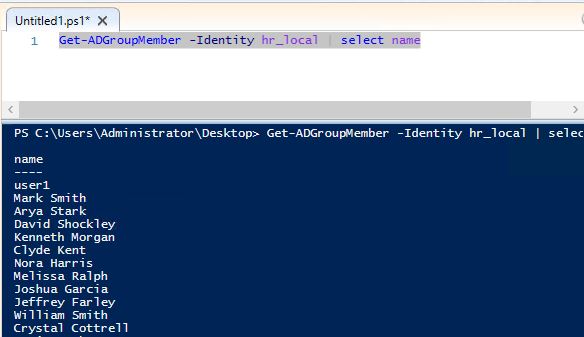
You can also verify with the Group Membership report tool. Select Group Report from the list, select your group, and click run. The tool will display all the members of the group.

This tool is included in the AD Pro Toolkit.
Bulk Add Multiple Users to Multiple Groups
So far I have shown you examples of adding single and multiple users to a single group. Now let’s look at an example of adding users to multiple Active Directory groups.
I’m going to add users to the “HR_local”, “HR_Folders”, “Public_share1, and “Public_share2 at the same time. This is a huge time saver.
To add users to multiple groups just enter the group name in the memberof column and separate them with a comma.
Here is a screenshot of the CSV I have configured for this example.
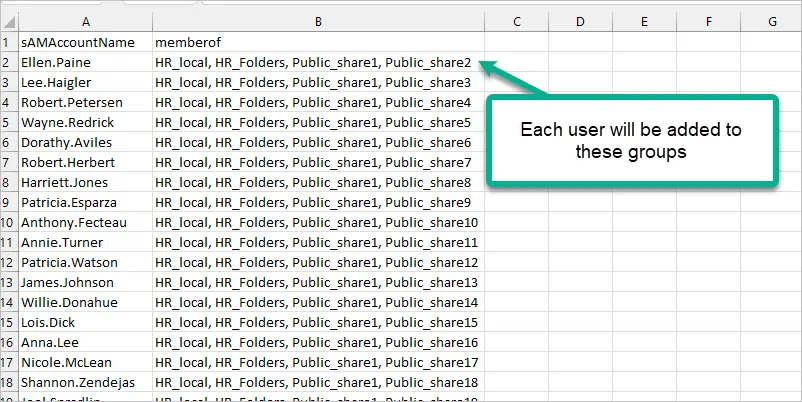
When your CSV template is ready open the group management tool.
Select “Add”.
Select your CSV and click run.

That was easy. I just added 47 users to 4 different Active Directory groups and saved myself a lot of time.
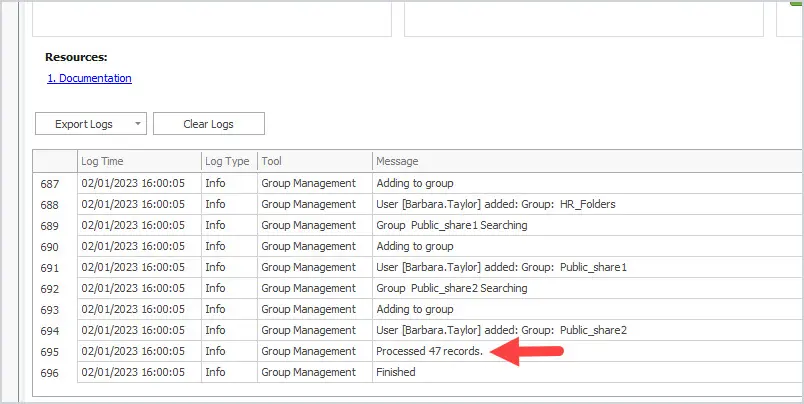
You can use PowerShell, ADUC, or the Group Report tool to verify the group membership.
Bulk Remove Users from a Group
To remove users from multiple groups follow these steps.
- Enter the group and user info into the template, same steps as adding users.
- In the Update Group Membership tool select “Remote”
- Select your CSV file and click run.
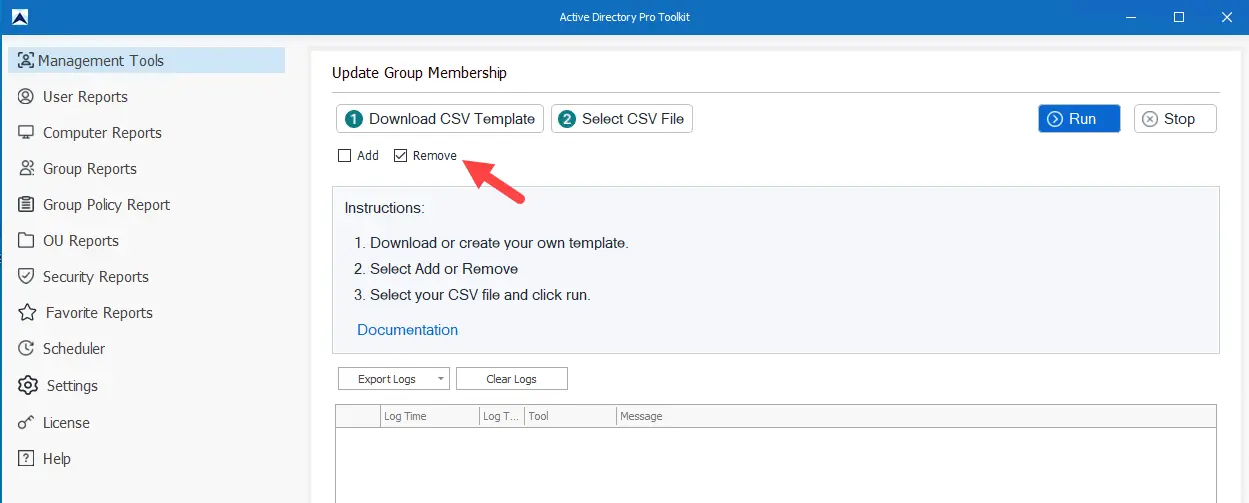
Add User to a Group Using Active Directory Users and Computers (ADUC)
In this example, I will use the Active Directory Users and Computers GUI console to add a user to a security group.
For this example, I will add user Alice Mills to the Accounting_folders security group.
Open ADUC, open the user account and click on the “member of” tab.

Next, click on the add button.
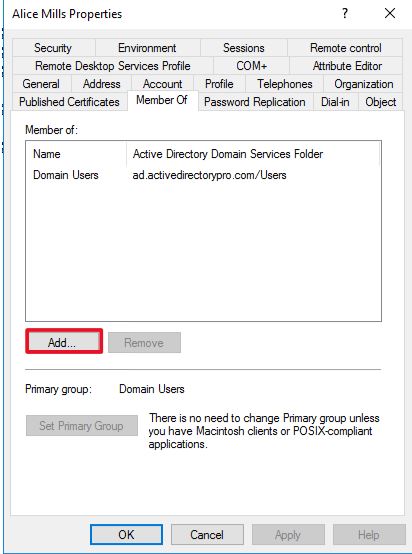
You can type the full group name out or if you don’t remember it just type a partial name and click check names. I typed accounting and when I click check names it gave me a list of all the matching groups.
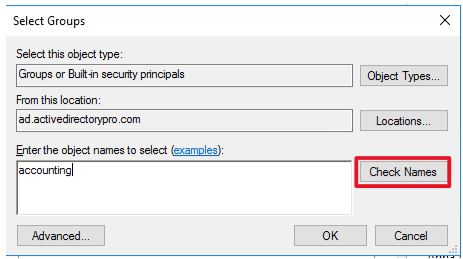
It found three groups that have accounting in the name, I selected the one I wanted and clicked ok.
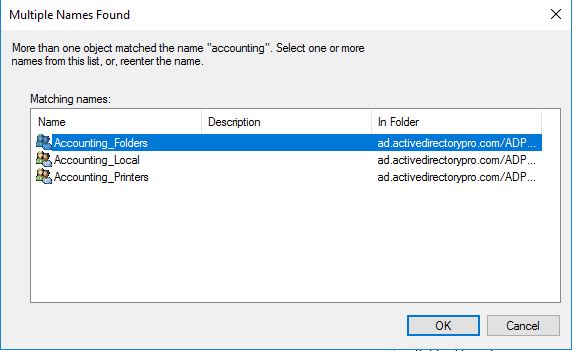
Click ok again.
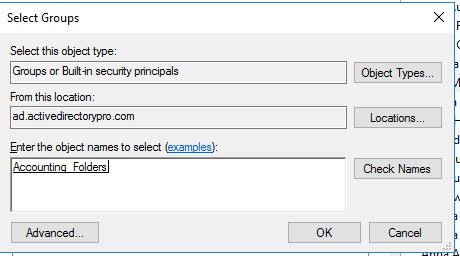
Click ok and you are done.
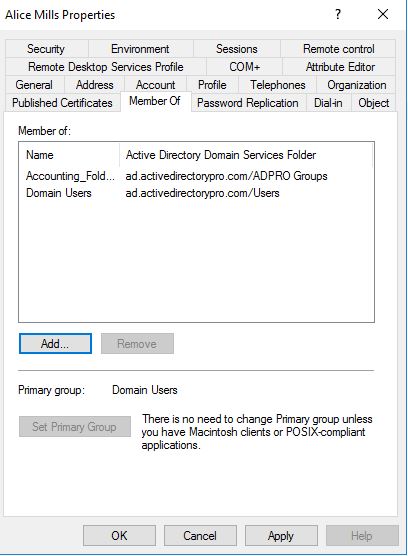
You can confirm this by seeing the group listed in the members of tab for the user account.
I hope this article helped you find a solution for adding users to Active Directory Security Groups. This is a very common task for System Administrators and there are multiple ways it can be done. PowerShell is a popular choice for Active Directory management but for those that don’t have time to mess with scripts, there are some good GUI tools as an alternative. The AD Pro Toolkit is a very low-cost set of tools that help with many of the day to day Active Directory tasks. You can download a free trial and test it out in your environment.
If you liked this article or have a question please post a comment below.